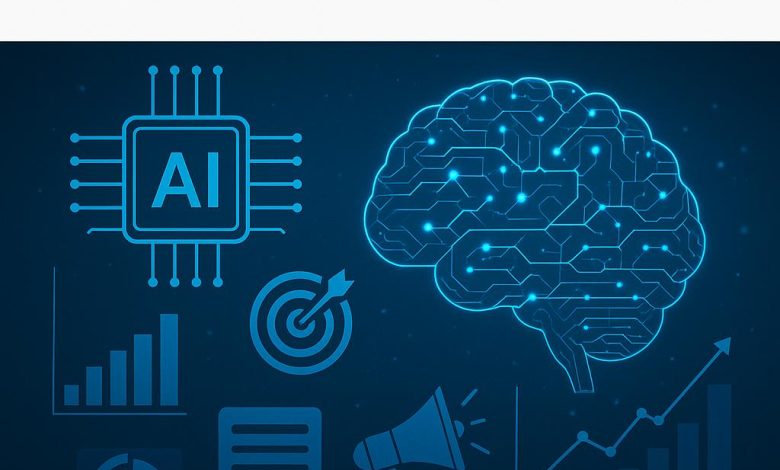
From Chatbot to Competitive Advantage
For years, AI in customer service was synonymous with one thing: the chatbot. And while chatbots have their place, they’re only scratching the surface of what’s possible. The companies leading the charge today are thinking far beyond automated responses—they’re using AI to deliver personalized, proactive, and emotionally intelligent customer experiences.
AI has gone from buzzword to business imperative. As Forbes puts it, it’s not about reacting after a problem occurs—it’s about solving issues before customers even notice. It’s a shift from reactive to anticipatory service, and that changes everything.
Forward-thinking C-suites now view AI as a core differentiator, not a futuristic experiment. It’s helping brands increase satisfaction, cut costs, and build loyalty that goes far beyond transactional interactions. The new frontier of customer experience isn’t just powered by AI—it’s defined by it.
Reference:
🔗 https://www.forbes.com/sites/forbescommunicationscouncil/2023/10/26/the-era-of-the-proactive-chatbot-how-ai-is-redefining-customer-service/
Intelligent Self-Service: Helping Customers Help Themselves
Today’s customer journey often begins digitally—and customers expect to find answers fast. Waiting on hold or being passed between departments is a non-starter. If the experience isn’t smooth, most won’t even bother to stay.
This is where intelligent self-service comes in. Unlike old-school FAQs or clunky bots, AI-powered self-service platforms use natural language processing (NLP) to truly understand what a customer is asking—even if it’s phrased in a complicated way. These systems can interpret intent, search massive knowledge bases, and deliver clear, contextual answers on the spot.
A recent McKinsey study confirms that smart self-service isn’t just a convenience—it’s becoming essential. It helps reduce support volume, lower operating costs, and free up human agents to handle more sensitive or complex issues. It also empowers customers to take control, building trust and increasing satisfaction.
In this way, AI is reshaping the first touchpoint in the customer journey—from a bottleneck to a breakthrough.
Reference:
🔗 https://www.mckinsey.com/industries/financial-services/our-insights/the-future-of-customer-experience-is-here
Real-Time Personalization: The “Customer of One” Approach
Traditionally, marketing and customer service were siloed departments. One brought customers in; the other helped them after something went wrong. But AI is blurring those lines, creating a single, real-time view of each customer that spans the entire journey.
Imagine this: A customer lingers on a pricing page, looks frustrated, or abandons their cart. AI picks up on these subtle signals—like scrolling behavior or hesitation—and responds in real time. It might trigger a live chat, a discount pop-up, or a helpful article to nudge them toward a decision.
This isn’t science fiction—it’s how leading brands operate today. It’s called “customer of one” personalization. AI doesn’t just remember what a customer did in the past. It adapts based on what they’re doing right now.
And it works. Customers feel seen. Understood. Supported. That’s what turns a quick transaction into a loyal relationship.
Reference:
🔗 https://www.mckinsey.com/industries/financial-services/our-insights/the-future-of-customer-experience-is-here
Proactive Problem-Solving: Fixing What’s Broken Before It Breaks
Reactive customer service is quickly becoming obsolete. Instead of waiting for customers to reach out, businesses are turning to AI to predict issues before they arise.
By analyzing huge volumes of data—like service logs, shipping delays, outages, or even weather patterns—AI can identify early warning signs of trouble. From there, it can alert both internal teams and customers, offering solutions before a complaint ever happens.
Take telecoms, for example. If AI detects that a certain neighborhood is at risk for a network outage, it can notify affected customers before they experience service disruption. That one simple heads-up changes how customers view the brand—from unreliable to proactive.
As Gartner points out, this shift to predictive service improves loyalty and reduces support volume. It shows customers you’re not just listening—you’re looking out for them.
Reference:
🔗 https://www.gartner.com/en/articles/the-future-of-customer-service-and-support-is-proactive
The Human-AI Tandem: Better Together
There’s a common misconception that AI will replace human customer service agents. The reality? AI is making them better.
By handling repetitive and data-heavy tasks—like password resets or order tracking—AI frees agents to focus on what they do best: navigating emotional conversations, solving tricky problems, and building real rapport with customers.
It also enhances coaching and performance. AI tools can monitor sentiment, flag common complaints, and help managers personalize training for support staff. In short, it makes your human team more human—and more effective.
The goal isn’t to replace the heart of service. It’s to scale it.
Reference:
🔗 https://www.mckinsey.com/industries/financial-services/our-insights/the-future-of-customer-experience-is-here
Conclusion: The New C-Suite Imperative
AI is no longer a next-step increment for customer service; it’s a strategic initiative for any business that desires to future-proof its customer experience. The evolution from reactive chatbot support to predictive, personalized engagement isn’t just about upgrading tools—it’s about shifting mindset.
Adopting the change pays off in hard numbers: reduced support costs, higher customer lifetime value, and loyalty that’s difficult for competitors to replicate. The true winners will be those who view AI as a relationship builder—not just an automation engine.
For today’s C-suite, the message couldn’t be clearer. This isn’t a side project or a tech team experiment. Embedding AI into your customer journey is the smartest, most human-centric move you can make.
Reference:
🔗 https://www.forbes.com/sites/forbescommunicationscouncil/2023/10/26/the-era-of-the-proactive-chatbot-how-ai-is-redefining-customer-service/

